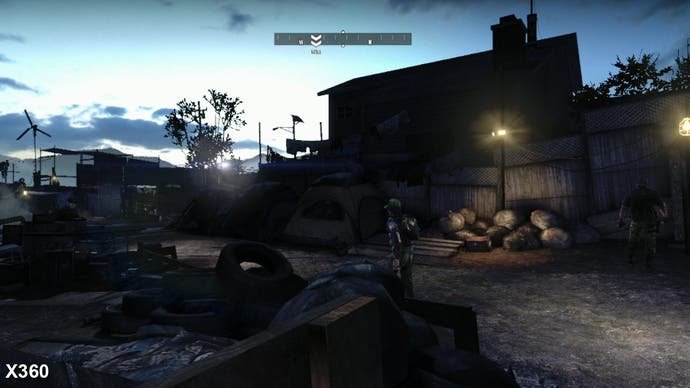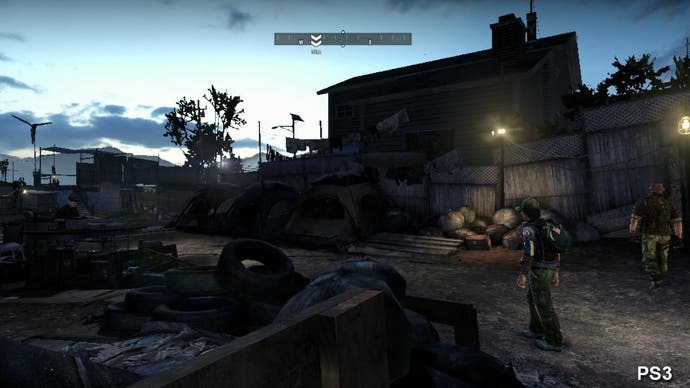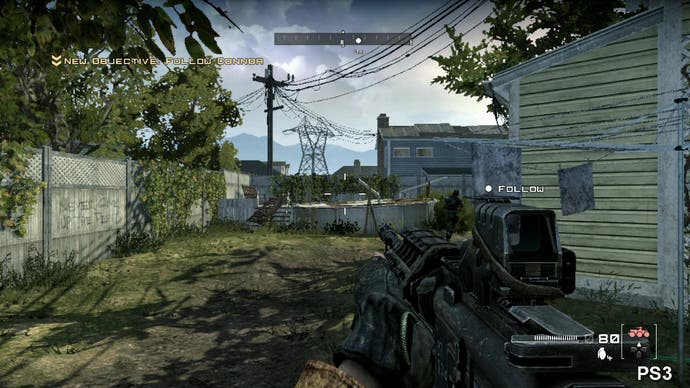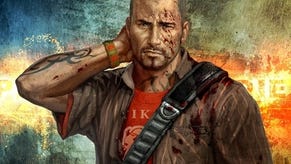Face-Off: Homefront
Korea advice.
Other than that, there doesn't appear to be a huge amount of difference between the two console SKUs aside from a handful of technical curiosities, including what seems to be better texture filtering on the Xbox 360 game. The difference here isn't so hugely apparent owing to the lower native resolution inherent to both platforms. Another minor element appears to be in how foliage is handled: it appears to be somewhat sparser and lower-resolution in places on the PS3, but as this is just an incidental aspect of the make-up of the game, it's barely noticeable.




From the screen-tear to the sub-HD resolution to the artistic merits of the core art, Homefront simply seems to lack a certain element of polish - and this is something that is common to both Xbox 360 and PS3 versions of the game.
Take for example the implementation of screen space ambient occlusion (SSAO). What should be a subtle effect adding depth to the nooks and crannies of the scene mostly seems to manifest as a really heavy black haze that seems to pop up around the characters whenever they move close to a wall. Lighting in Homefront can be absolutely sublime - especially on exterior scenes - and it's disappointing to see a general sense of unevenness and discontinuity in the quality of the visuals.
Of course, we should factor in that Homefront is available on PC as well as console, with Digital Extremes (Dark Sector, BioShock PS3, Unreal) in charge of the computer version. Bump up the resolution of the framebuffer, blitz our way up to full 60FPS with some beefier GPU tech, and enjoy the higher-precision effects you get out of the box with Unreal Engine 3 and we should have a better idea of the base quality of the core assets.
Let's re-run our comparison movie, with the PC version at max settings (including 4x MSAA) up against the PS3 build, with a 360 comparison also available if you'd prefer that. The difference between the console and PC versions is quite remarkable.
While it's clear that the PC game has some instances of higher-resolution artwork, when viewed up close most of the core assets look very similar to what we see in the console versions. The difference is that higher native resolution in combination with better texture filtering produces a game that is much cleaner than it is on console, which looks very murky in comparison.
While the 16x anisotropic filtering we can engage on PC isn't really viable on console, those extra pixels make a hell of a lot of difference - and that's just at native 1280x720. You can't help but wonder how much better the Xbox 360 and PS3 versions would have looked if Kaos had been able to sustain the native 720p employed by the vast majority of Unreal Engine 3 titles.
Hardware-wise, Homefront is a relatively undemanding game on PC, as is often the case with titles derived from Unreal Engine 3 technology. A modern dual-core CPU around 2.5GHz or better should do the job nicely, and in combination with an AMD Radeon HD 5770 or NVIDIA GTX 260, you should be able to run 1080p at 30 frames per second at max settings.
To reach the heights of 1080p60 at the same extreme level you'll be looking for a fast i7 in combination with an NVIDIA GTX580 or similar. NVIDIA SLI users should note that currently Homefront does not support dual GPUs, but this is being enabled in a new driver, a beta of which appears to have been leaked already.
It's really difficult to come to any sort of conclusion about which console version of Homefront gets the nod. In theory, the Xbox 360 game with its more refined graphics and higher performance level should emerge triumphant, but the uncapped frame-rate really impacts the quality of the visuals and even if you're not so sensitive to screen-tear, it's impossible to miss here. For its part, the PS3 is also prone to intrusive tearing, which occurs when it shifts below 30FPS - unfortunately, in the thick of the action, this is a frequent occurrence.
There's little doubt that it's the PC version of Homefront that offers the best all-round technical and gameplay experience (high frame-rates and the mouse/keyboard combo simply can't be beaten) but the transformation is nowhere near as pronounced as it was with the PC version of the Medal of Honor single-player mode. On console it was difficult to judge just exactly what Danger Close was trying to achieve with the campaign, but on PC, better hardware transformed it into a more realistic, higher detail Call of Duty-style game.
There's just no escaping the feeling that Homefront doesn't totally deliver as a complete package in what is the most fiercely competitive area of the video games market. Despite the involvement of writer John Milius (Apocalypse Now, Red Dawn) and an intriguing scenario with virtually limitless potential, in terms of technological accomplishment, visual artistry and the quality of the basic gameplay, in many ways the single-player campaign almost feels obsolete straight out of the box.
Where the game finds its feet is in the multiplayer - technological shortcomings in the rendering tech are not quite so important when we have ideas that are fresh and original backed up by the infrastructure necessary to make the online experience a bigger and busier place to be compared to the competition (though for PS3 owners, MAG remains the most massively multiplayer FPS around). Multiplayer is also where Xbox 360 can claim extra credit: it has an extra map and first dibs on the DLC.
In conclusion, as clichéd as it might sound, Homefront is very much a game of two halves - just as much, if not more so, than Medal of Honor. If you own both HD consoles and you're wondering which SKU to invest in, it's fair to say that online is the deciding factor, and so the make-up of your respective friends lists is probably of far more importance than the technical issues we've highlighted here.









